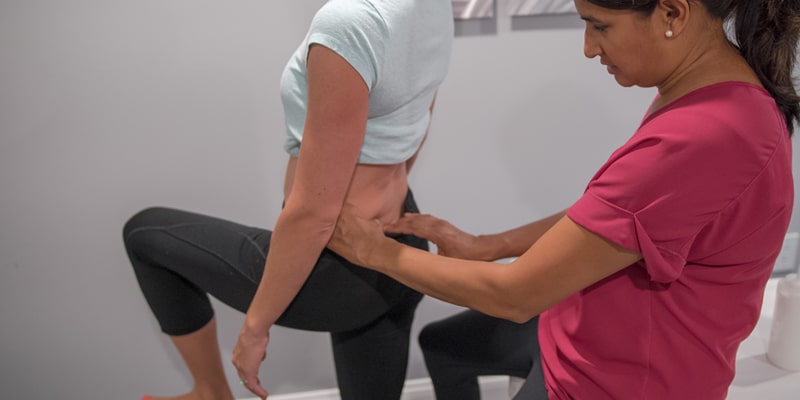
We get asked a lot by our patients who are experiencing Pelvic Floor Dysfunction if scoliosis could be playing a role. The answer to this depends on the severity of your scoliosis and what other issues are going on in your body.
Scoliosis is an anatomical curvature of the spine. You can either have a C curve or S curve where the spine curves two different ways. This curvature can change the way that your pelvis sits and cause your pelvis to be torqued one way or the other depending on which way the spine is curving.
The musculature of the pelvic floor sits within the pelvis. So if you have a change in your pelvis, then anything that attaches to your pelvis will also change – including all 16 muscles of your pelvic floor. You can have weakness or tightness in certain muscles, which can lead to issues such as:
In our experience, a mild scoliosis is rarely the cause of Pelvic Floor Dysfunction.
Sometimes a moderate to severe scoliosis could have an effect on your pelvic floor. However, this doesn’t mean that you won’t be able to treat your pelvic floor dysfunction.
Scoliosis can lead to changes not just in your pelvis, but also in the musculature that surrounds the spine. It can cause compensations, with certain muscles becoming overly tight or weak. This can include not just the musculature in the back, but also through the abdomen and the deep muscles that go from the abdomen into the pelvis/hip. This can create change in the pelvic floor and could lead to compensation in your pelvic floor.
You don’t want to completely blame the scoliosis on your pelvic floor dysfunction, but it could be one of the pieces contributing to your pelvic floor issues as well as all the other things in your history such as:
So, if you have a scoliosis it could be contributing but it’s rarely the direct cause, especially in mild cases.
If you do need to have this treated, or you haven’t had this treated you need to find an integrative pelvic floor and orthopedic physical therapist. They need to know how to treat all the pieces, including the spine, back, hips, etc. to improve the alignment and synchronicity of all the muscles.
To schedule a complimentary phone consultation with one of our physical therapists to discuss your symptoms, click here.
In-Person and Online Consultations


